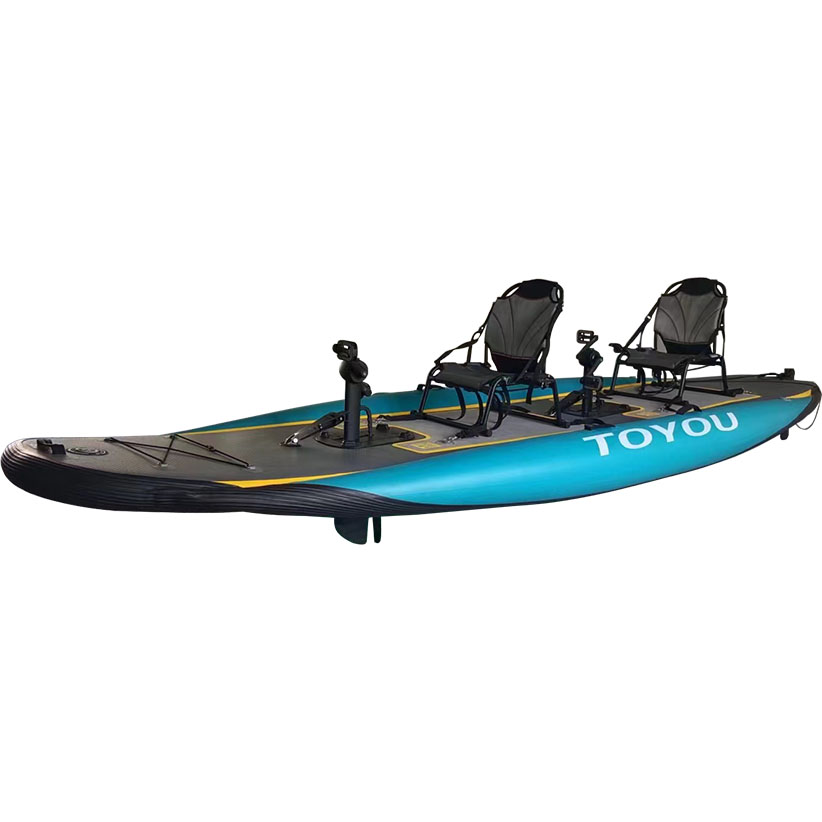Fishing from an inflatable kayak pontoon offers a unique and versatile experience. Here’s what it’s like:
Stability
One of the key features of an inflatable pontoon kayak is its exceptional stability. The dual-pontoon design offers a wider, more balanced platform than traditional kayaks, which makes it ideal for fishing. This stability is particularly important for standing or casting in choppy waters, giving you confidence while moving or reeling in a catch.
Maneuverability
Inflatable kayak pontoons are generally easy to maneuver due to their lightweight construction. You can paddle or use a trolling motor, depending on your setup. Despite their size, they can handle tight turns and narrow channels, making them suitable for lakes, rivers, and coastal waters.
Comfort
The seating on inflatable kayak pontoons is often more comfortable than standard kayaks, offering raised seats with good back support. This allows for longer fishing trips without discomfort. Some models even feature swivel seats, giving you more freedom to move around without needing to reposition the entire kayak.
Portability
Since inflatable kayak pontoons are lightweight and easy to pack, they’re ideal for anglers who want to travel to remote locations. They can be deflated, stored in a bag, and transported in a car or even on foot, making them much more portable than hard-shell kayaks.
Storage and Customization
Most inflatable kayak pontoons offer plenty of storage for fishing gear. They come with storage compartments, rod holders, and even mounts for fish finders and other accessories. You can customize them to suit your fishing style, whether it’s for fly fishing, bass fishing, or trolling.
Durability
While inflatable pontoon kayaks are durable and made from tough materials like PVC or drop-stitch fabric, they can be more susceptible to punctures compared to hard kayaks. However, with proper care and maintenance, they can last for many years.
Fishing Flexibility
The wide platform and stability allow anglers to fish in various ways, including standing, fly fishing, and casting with more accuracy. You can also attach motors or anchors, increasing your range and keeping you stable in one spot.
Challenges
- Wind and Current: Inflatable pontoons can be more affected by wind and currents because of their lighter weight and higher profile, so anchoring might be necessary in strong conditions.
- Setup Time: You need to inflate the kayak before use, which takes a few minutes. It’s easy with a manual or electric pump, but it’s still an extra step compared to a hard-shell kayak.
In summary, fishing from an inflatable kayak pontoon is stable, portable, and customizable, making it a great option for anglers looking for versatility and comfort. However, inflatable kayak pontoon may require more attention to wind conditions and setup time.

